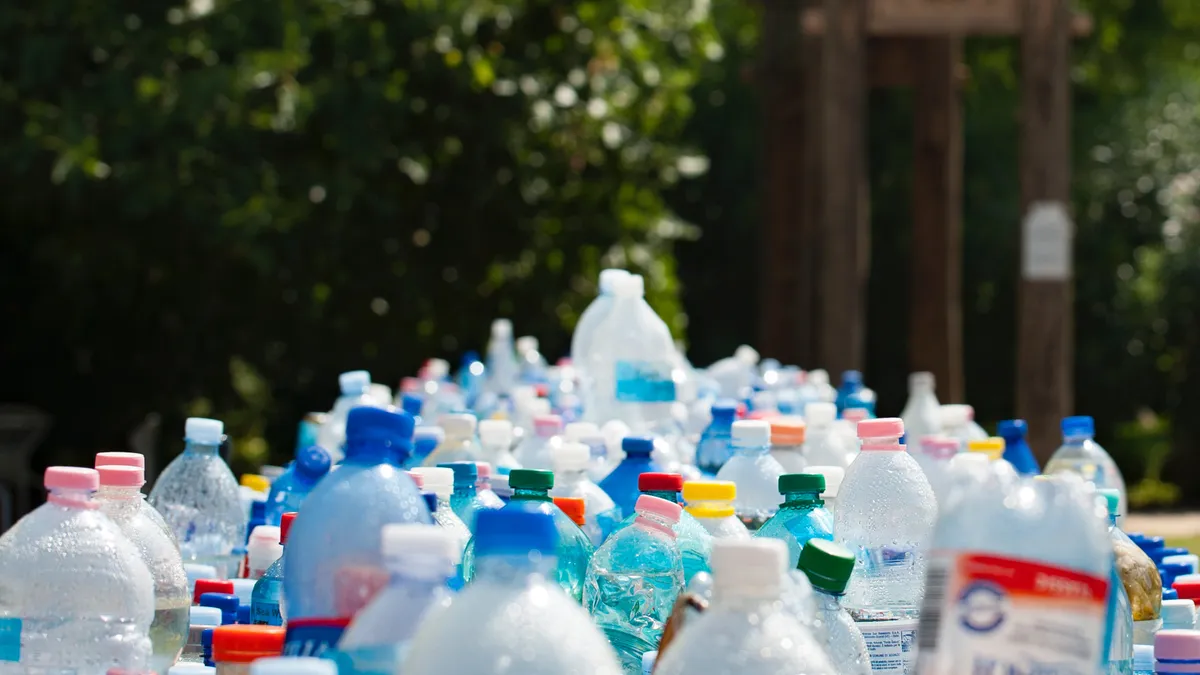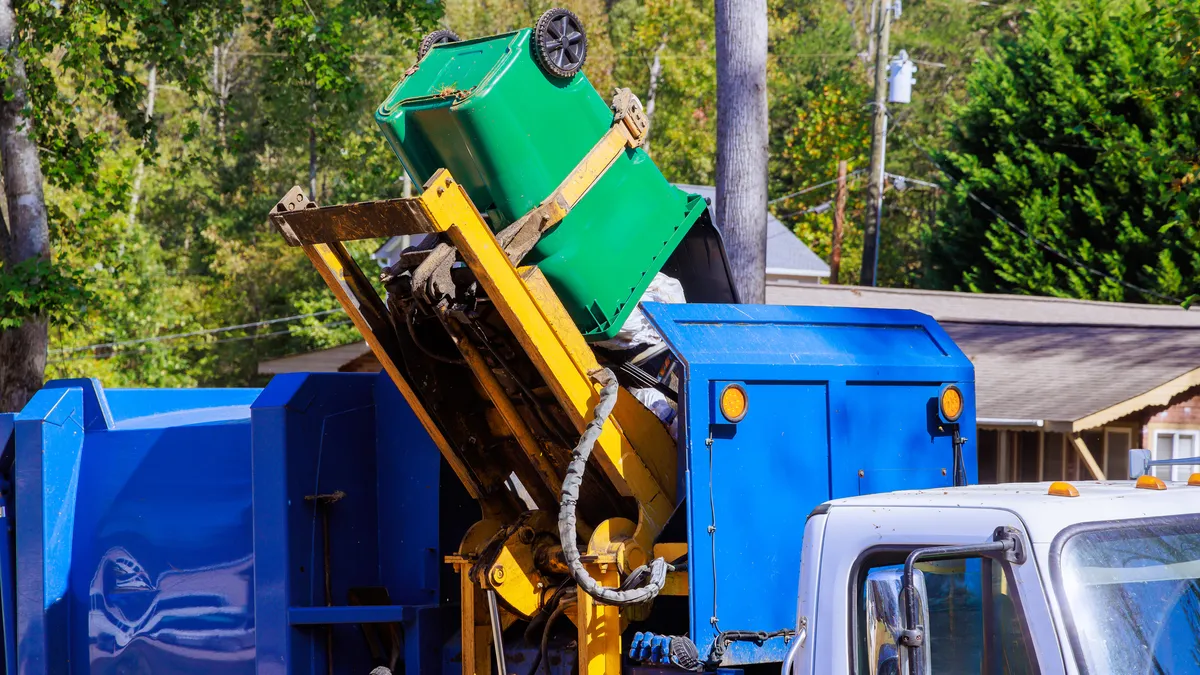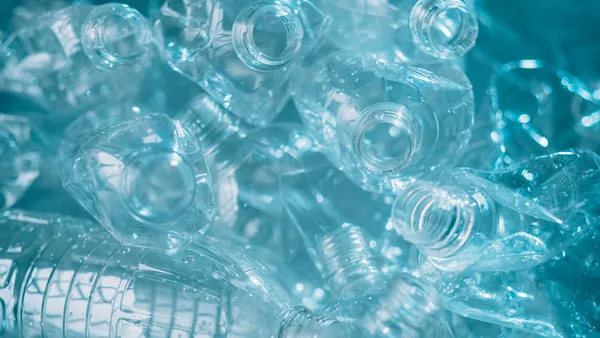Dive Brief:
- The Association of Plastic Recyclers (APR) has published a new report examining the lifecycle impacts for manufacturing products out of post-consumer resins versus virgin material. It concludes that using recycled resins reduces energy consumption and greenhouse gas emissions.
- The report looked at three resins — PET, HDPE and PP — and analyzed factors such as total energy consumption, water consumption, smog formation potential and solid waste resulting from the production of recycled resins. It concluded that recycled plastic reduced total energy consumption by 79% for PET, 88% for HDPE and 88% for PP.
- Recycled resin cut emissions over virgin material by 67% for PET, 71% for HDPE and 71% for PP. Recycled resin did not show savings over virgin in only four of the total 84 categories examined across the three resins.
Dive Insight:
This study — conducted by Franklin Associates, with a focus on North America — builds on 2011 research into PET and HDPE, with the addition of PP analysis. It analyzed lifecycle impacts along steps of a recycled resin's lifespan, including the fuel needed to run collection trucks, resources needed for separation at MRFs and energy to process the material into new forms, such as pellets or flakes.
The results showed notable savings in the vast majority of categories, leading APR to conclude that companies can lower their costs and environmental footprints by incorporating recycled material into new products. This goes against existing narratives that recycled content may not always be worthwhile due to higher price points or lack of steady supply caused in part by certain haulers shifting away from collecting some plastics.
Similar to the APR report, recently published research from Oregon's Department of Environmental Quality notes that using recycled content generally has environmental benefits relative to virgin when comparing the same type of material, though it also notes the many variables in play in such discussions. However, many other studies focus almost exclusively on financial costs and not on resource consumption during a resin's entire lifecycle.
The difference in these conclusions highlights another common challenge: exactly which metrics to focus on when determining the value of recycling, and realizing that something being "recyclable" doesn't necessarily equate to it getting recycled. For example, a municipality or company might report a high landfill diversion rate, but this doesn't guarantee the recovered materials are made into new products.
If haulers are expending fuel to collect material that is considered low-value and not getting sold due to contamination or other factors, the process isn't complete, and the environmental benefits won't be realized. This APR report illustrates the results that can occur in ideal situations — when plastics processors can source reliable amounts of quality material and companies choose to use it in their products.
That isn't always the case because of market complexities and it can take an extra push to ensure there is sufficient demand from manufacturers. APR has therefore been encouraging more companies to incorporate recycled resins into their products through programs such as "Recycling Demand Champions," which has companies making voluntary commitments to use postconsumer plastics and help expand end markets as a result.















